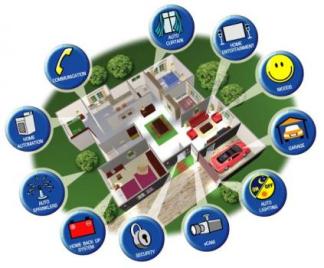
See why rather than simply saying ‘yes’ to every fancy home automation gadget available, you need to be able to plan your smart home based on your needs, and decide what will benefit you most.

Every smart home is different, because every regular home is different and every home owner has different tastes and ideas. Rather than simply saying ‘yes’ to every fancy home automation gadget available, you need to be able to plan your smart home based on your needs, and decide what will benefit you most.
What do you want to achieve?
Before deciding on any installation, you need to first understand what you want to achieve for your automated home. This will help you to brief your custom installer, who in turn can advise on the right parts, and what sort of work needs to be done. If you’re having a basic system implemented, most of the work can probably be done quickly and easily. If you want something a bit more elaborate though, a specially trained installer will need to evaluate every aspect of the install to ensure that everything’s done smoothly, and that the right contractors are called in at the right times.
Having a clear idea of what you want is crucial – if you’re not sure what you need, contacting a home automation consultant to discuss what sort of options are available within your budget is always a good start.
Scope and control
With any smart home, you need to decide the type and scope of the control you have over your appliances, and to what extent you will need to make changes to your home to accommodate it.
Retrofitting or building from scratch
The scope of your home automation installed may vary depending on the layout of your house, and what is already available to you. Houses that are currently being built or renovated will offer far easier access to crawl spaces and voids, allowing wires to be installed with a lot less fuss. Specific wiring is available for retrofit, or pre-built homes, but where this isn’t a sensible option, wireless systems can also used.
Depending on the scope and nature of the installation, retrofitting may even work out cheaper than installing automation in a house that’s in the process of being built. It can also be faster to complete, with installers not having to worry about getting in the way of other trades, or vice versa. Every home is different though, and your only real option when assessing installation costs is to have it costed by an installer.
Integration
One of the biggest benefits of home automation is the ability to integrate different functions to work in unison. Lighting controls, for example, may adjust both your curtains and your ceiling lights and lamps – and that in itself may even be integrated with your home theatre setup so that the lights automatically dim when you’re watching a movie. One significant aspect of home automation design is deciding on the extent to which things need to be integrated.
Future proofing
Probably the most frustrating thing about technology is that it’s always changing and evolving, and when you’re planning a home automation system it pays to think about how easily you’ll be able to add to it in future. Choosing a system that has extra communication capacity (either wired or wireless) will lower the chances that you’ll have to completely overhaul your system in future in order to add to it. Again, a qualified installer may be able to advise you on your best options and what sort of technology you may like to anticipate.
Budget
There’s a massive difference in price between a basic home automation system and one with every conceivable bell and whistle – but having said that, there are many variables that can be tweaked to get a system that does what you want it to. Before you commit to selling one of your kidneys, talk to a professional about what sort of options are available for the price you’re willing to pay.





